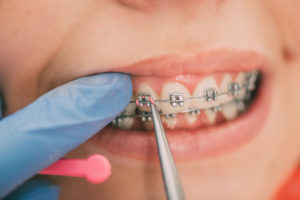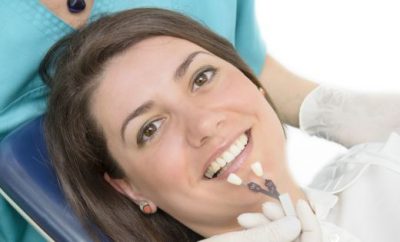Orthodontics, a cornerstone of specialized dental care, has been instrumental in addressing and rectifying dental and facial irregularities. As an orthodontist, I often encounter questions about our role and the procedures we offer. This article aims to shed light on these aspects.
What is an Orthodontist?
An orthodontist is a dental specialist trained to diagnose, prevent, and treat dental and facial discrepancies. After completing a general dentistry degree, an orthodontist undergoes additional years of rigorous training in a specialized orthodontic residency program. This training equips us with the expertise to manage tooth movement (orthodontics) and guide facial development (dentofacial orthopedics).
Historical Perspective on Orthodontic
Orthodontics roots trace back to ancient civilizations, where evidence suggests rudimentary attempts to straighten teeth using materials like gold and catgut. However, it wasn’t until the late 19th and early 20th centuries that orthodontics began to emerge as a recognized dental specialty. Modern orthodontic practices and principles have been shaped by pioneering figures like Edward Angle, often referred to as the “father of modern orthodontics.”
Current Procedures in Orthodontic
Braces:
Traditional metal braces have been the mainstay of orthodontic treatment for decades. Comprising brackets, wires, and bands, they work by applying consistent, gentle pressure on the teeth, guiding them to their desired positions.
Types of Braces and their Features:
- Traditional metal braces: Made of high-quality stainless steel, these braces consist of metal brackets bonded to the front of each tooth, connected by a wire. Periodic adjustments tighten the wire, gradually moving the teeth.
Advantages:- Durability: Metal braces are robust and can withstand most types of treatment.
- Cost-effective: Typically, they are less expensive than other orthodontic options.
- Ceramic braces: These braces function similarly to traditional metal braces but are made of a translucent ceramic material that blends with the natural color of the teeth, making them less noticeable.
Advantages:- Aesthetics: They offer a more discreet look, preferred by many adults and image-conscious teenagers.
- Performance: Ceramic braces are sturdy, though they may require more careful maintenance to prevent staining.
- Self-ligating braces: Unlike traditional braces that use elastics to hold the wire, self-ligating braces use a specialized clip. This reduces the amount of pressure exerted on the tooth and requires fewer adjustments.
Advantages:- Reduced friction: They create less friction between the wire and bracket.
- Efficiency: Often associated with slightly shorter treatment times and fewer dental visits.
Clear Aligners:
A modern alternative to braces, clear aligners are a series of custom-made, transparent trays designed to incrementally move teeth into their desired positions.
- Function: Each set of aligners is worn for about 1-2 weeks, moving the teeth little by little. Over time, as you progress through the series, your teeth align to their target positions.
Advantages:- Aesthetics: Being virtually invisible, they offer a discreet method of straightening teeth.
- Removability: Unlike braces, aligners can be removed during eating, brushing, or for special occasions.
- Comfort: Without brackets or wires, they tend to be more comfortable and reduce the risk of mouth sores.
- Predictability: Advanced 3D imaging allows patients and orthodontists to visualize the entire treatment plan, from the initial position to the final desired outcome.
Retainers:
After active orthodontic treatment, retainers are essential tools used to maintain the new tooth position and prevent relapse. The importance of retainers cannot be overstated. Once teeth have been moved into their desired positions, the surrounding bone and soft tissues need time to adapt to these changes. Retainers help stabilize the teeth during this adaptation period.
Why is it Important to use Retainers After the Procedure?
- Bone adaptation: Even after teeth have been moved, the bone around them remains soft and needs time to harden. Retainers ensure teeth don’t shift during this period.
- Natural aging process: As we age, our teeth tend to shift. Retainers help counteract this natural movement, ensuring the longevity of orthodontic results.
What can Happen if People don’t use Them?
- Relapse: The most significant risk of not wearing a retainer is the teeth returning to their original or undesired positions.
- Compromised Results: The time and financial investment in orthodontic treatment can be wasted if the achieved results aren’t maintained with retainers.
Palatal Expanders:
These devices are designed to widen the upper jaw, addressing specific dental and skeletal issues. They apply gentle pressure on the upper molars, gradually increasing the width of the palate.
Cases Where Palatal Expanders are Used:
- Crossbites: When the upper teeth fit inside the lower teeth, which can lead to asymmetric jaw growth.
- Crowding: Insufficient space in the upper jaw can lead to crowded teeth. Expanders can create the necessary space, often reducing or eliminating the need for tooth extractions.
- Impacted teeth: An impacted tooth is one that doesn’t erupt due to lack of space. Expansion can help create the necessary room for the tooth to emerge.
- Breathing Difficulties: A narrow palate can sometimes contribute to breathing or airway problems, especially in children. Expansion can help address this.
Surgical Orthodontics:
For patients with severe malocclusions or skeletal discrepancies, orthognathic surgery might be recommended. This surgery is performed in conjunction with orthodontic treatment to ensure optimal functional and aesthetic results.
Cases Where Surgical Orthodontics is Needed:
- Severe underbites or overbites: When the discrepancy between the upper and lower jaws is too significant to be corrected with orthodontics alone.
- Facial asymmetry: Cases where one side of the jaw has grown more than the other, leading to an asymmetric appearance.
- Sleep apnea: In some cases, orthognathic surgery can help open up the airway, improving symptoms of obstructive sleep apnea.
- Difficulty chewing or biting: When the jaws don’t align properly, it can lead to functional issues like difficulty in chewing or biting.
Advantages of Orthodontic Procedures
- Improved oral health: Straight teeth are easier to clean, reducing the risk of cavities and gum disease.
- Enhanced aesthetics: A well-aligned smile boosts confidence and self-esteem.
- Optimal function: Properly aligned teeth ensure efficient chewing, speaking, and overall oral function.
- Prevention of dental issues: Addressing malocclusions early can prevent excessive wear, TMJ disorders, and potential trauma to protruding front teeth.
Maintaining your Treatment
Braces:
- Regular brushing: Brush after every meal to remove food particles trapped in the braces. Use a soft-bristled toothbrush and fluoride toothpaste. An interdental brush can help clean between brackets and under wires.
- Flossing: Floss daily using a floss threader or orthodontic floss to navigate around the braces and reach the gum line.
- Avoid certain foods: Stay away from hard, sticky, or chewy foods that can damage the braces, such as popcorn, nuts, caramel, and gum.
- Regular adjustments: Attend all scheduled orthodontic appointments for adjustments and check-ups.
- Wear mouthguards: If involved in sports, wear a mouthguard to protect the braces and teeth from potential trauma.
Ceramic Braces:
- Avoid staining foods and beverages: Ceramic braces can stain, so it’s best to avoid foods and drinks like coffee, tea, red wine, and berries.
- Regular cleaning: As with metal braces, brush and floss diligently to maintain oral hygiene.
- Use Non-Whitening toothpaste: Whitening toothpastes can cause discoloration of the areas around the brackets, leading to uneven tooth color.
Self-Ligating Braces:
- Regular cleaning: The care routine is similar to traditional braces. Brush and floss regularly to prevent plaque buildup.
- Avoid hard foods: Even though self-ligating braces are durable, it’s still essential to avoid foods that can damage the brackets or wires.
Clear Aligners:
- Clean aligners: Rinse the aligners every night and brush them gently with a soft toothbrush to keep them clear and free from residue. Avoid using toothpaste, as it can be abrasive.
- Wear regularly: For optimal results, wear the aligners for 20-22 hours a day, removing them only for eating, drinking (anything other than water), and oral hygiene.
- Avoid hot beverages: Do not drink hot beverages while wearing aligners, as heat can warp and distort the plastic.
- Store safely: When not wearing the aligners, store them in their provided case to prevent damage or misplacement.
Conclusion
Orthodontics, with its diverse range of treatments, offers solutions tailored to individual needs, ensuring optimal dental health and aesthetics. Whether you opt for traditional braces, ceramic variants, self-ligating systems, or clear aligners, understanding and adhering to proper care routines is paramount. This not only ensures the effectiveness of the treatment but also preserves the health of your teeth and gums. At Dr. Loren Grossman’s practice, we are committed to providing top-tier orthodontic services, guiding our patients every step of the way. From initial consultation to post-treatment care, our goal is to ensure you achieve and maintain the smile you’ve always desired.








